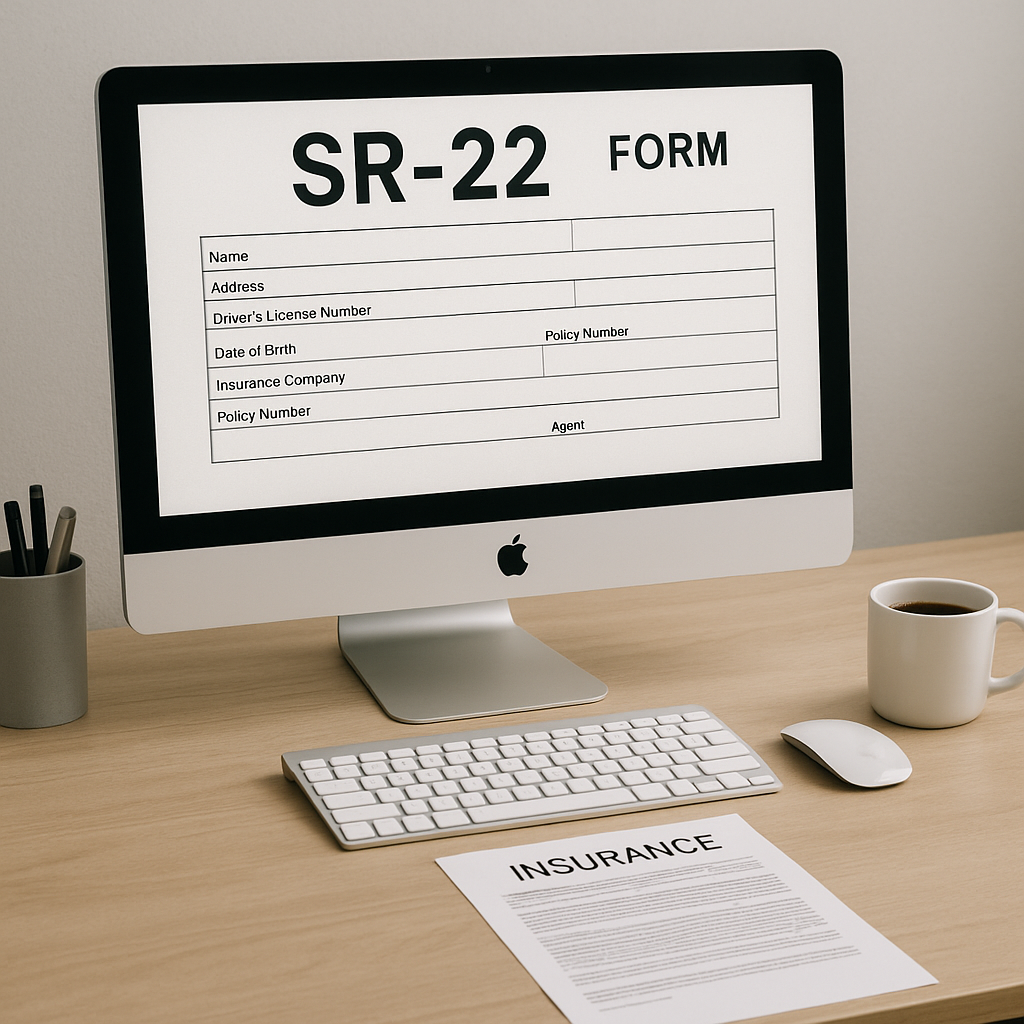SR22 Car Insurance: How Lucy Got Back on the Road After a DUI
Understand what SR22 insurance really means, who needs it, how much it costs, and how to file — all through the real-life story of one driver’s experience.
Not every driver starts off thinking they’ll need SR22 insurance. But for some, like Lucy, life takes an unexpected turn.
Lucy was like many young professionals. She had a good job, a compact car, and a decent driving record—until one night she made the wrong choice. After attending a friend’s birthday party, Lucy decided to drive home, thinking she was okay. She wasn’t. She was pulled over and arrested for driving under the influence (DUI).
A few weeks later, she received a notice from the DMV: if she wanted to regain her driving privileges, she’d need to file an SR22.
Let’s walk through what SR22 insurance is, how it works, and what to expect—whether you’re in Lucy’s shoes or just curious about the process.
What Is SR22 Insurance?
Contrary to popular belief, SR22 isn’t a type of insurance policy. It’s a form or certificate that your insurance company files with your state’s DMV to prove you carry the state’s minimum required liability insurance.
Think of it as a “proof of responsibility” document. Once filed, it notifies the state that you’re maintaining insurance—even if you’ve had prior violations. If your policy lapses, your insurer must notify the DMV, which could lead to license suspension all over again.
Who Needs an SR22?
SR22 requirements are usually reserved for high-risk drivers who have committed serious driving violations. You might need an SR22 if you’ve:
- Been convicted of a DUI or DWI
- Driven without insurance
- Been caught driving with a suspended or revoked license
- Had multiple at-fault accidents or traffic violations
- Failed to pay court-ordered child support (in some states)
In Lucy’s case, her DUI triggered a license suspension. The court told her she’d need to file an SR22 with the state DMV in order to reinstate her driving privileges.
How to Get SR22 Insurance
You can’t file an SR22 on your own—it must be submitted by a licensed insurance provider.
Here’s how Lucy did it:
- Called her insurer: Her current provider didn’t offer SR22 filings, so she had to shop around.
- Got quotes from SR22-friendly companies: Some insurers specialize in high-risk policies.
- Purchased a policy and requested SR22 filing: Her insurer filed the SR22 electronically with the DMV.
- Paid the filing fee: Usually between $15–$50, on top of the premium.
Many companies offer SR22 quotes online, and some even provide same-day filings to speed up the reinstatement process.
How Long Do You Need SR22 Insurance?
The required time frame for maintaining SR22 coverage varies by state, but most require it for three consecutive years. Some states require only one or two years, while others extend it longer for repeat offenses.
The clock usually starts ticking from the date your license is reinstated, not the date of the offense or the filing.
How Much Does SR22 Insurance Cost?
SR22 insurance is typically more expensive than standard policies due to the underlying violations that triggered the requirement.
Here’s what can influence your rate:
- Driving history: DUIs, reckless driving, or repeat offenses raise costs
- Location: Some states penalize more heavily than others
- Vehicle type: Newer or luxury vehicles cost more to insure
- Coverage limits: State minimum coverage is cheaper but offers less protection
In Lucy’s case, her annual premium jumped from $1,200 to over $2,800 after her DUI and SR22 filing. But after two years of clean driving, her rate began to drop.
Can You Get SR22 Insurance Without a Car?
Yes! If you don’t own a vehicle but still need to reinstate your license, you can apply for a non-owner SR22 policy.
This is common for people who:
- Had their license suspended
- Don’t currently own a car
- Need to drive a work vehicle or borrow a car
Non-owner SR22 insurance usually costs less than standard SR22 policies, but it won’t cover any vehicle you own or drive regularly.
What Happens When Your SR22 Period Ends?
Once you’ve fulfilled the SR22 requirement, your insurer will typically file a form (often called an SR26) with the DMV to confirm it’s complete.
At that point, you can switch to a standard policy—often at much lower premiums, especially if you’ve had no violations during the SR22 period.
Real-World Takeaway: Lucy’s Story, Revisited
Lucy’s DUI was a wake-up call. The SR22 filing didn’t just cost her more money—it also meant three years of spotless driving, court appearances, and staying on top of her insurance.
But she did it.
By year three, her record was clean. Her SR22 was lifted, and she switched to a standard policy with lower premiums.
“It was a tough stretch,” Lucy said. “But staying insured and focused helped me get my life back.”
Frequently Asked Questions about SR22 Insurance
- Do all states require SR22 filings for DUIs?
- No, but most do. A few states use similar forms under different names (e.g., FR-44 in Virginia and Florida).
- Can I switch insurance companies during my SR22 period?
- Yes, but your new insurer must file a new SR22 form immediately. Any gap could lead to suspension.
- Will SR22 show up on my credit report?
- No, but missed payments or cancellations could affect your credit if sent to collections.
- Is SR22 only for auto insurance?
- Primarily, yes. But in rare cases, it may apply to motorcycles or non-owner policies as well.
